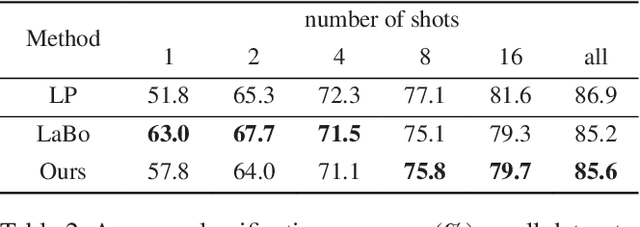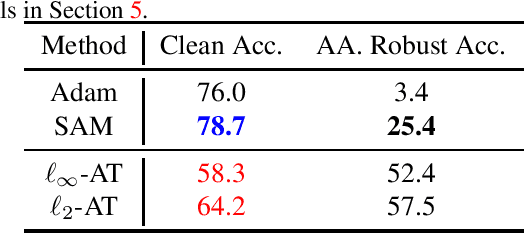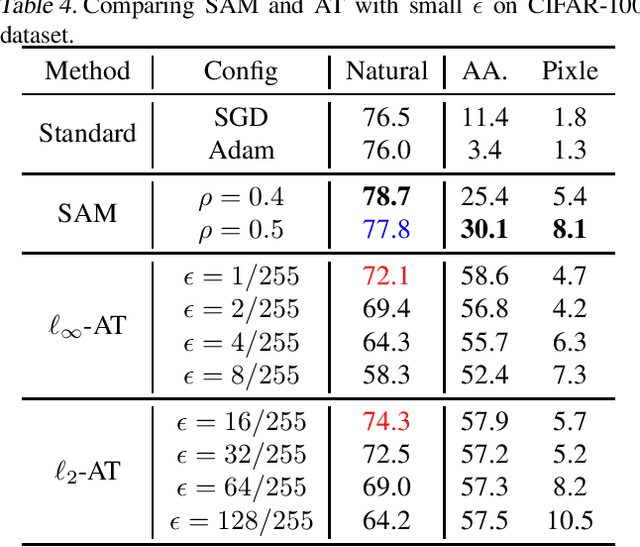Hangzhou He
Exploiting Inherent Class Label: Towards Robust Scribble Supervised Semantic Segmentation
Mar 18, 2025Abstract:Scribble-based weakly supervised semantic segmentation leverages only a few annotated pixels as labels to train a segmentation model, presenting significant potential for reducing the human labor involved in the annotation process. This approach faces two primary challenges: first, the sparsity of scribble annotations can lead to inconsistent predictions due to limited supervision; second, the variability in scribble annotations, reflecting differing human annotator preferences, can prevent the model from consistently capturing the discriminative regions of objects, potentially leading to unstable predictions. To address these issues, we propose a holistic framework, the class-driven scribble promotion network, for robust scribble-supervised semantic segmentation. This framework not only utilizes the provided scribble annotations but also leverages their associated class labels to generate reliable pseudo-labels. Within the network, we introduce a localization rectification module to mitigate noisy labels and a distance perception module to identify reliable regions surrounding scribble annotations and pseudo-labels. In addition, we introduce new large-scale benchmarks, ScribbleCOCO and ScribbleCityscapes, accompanied by a scribble simulation algorithm that enables evaluation across varying scribble styles. Our method demonstrates competitive performance in both accuracy and robustness, underscoring its superiority over existing approaches. The datasets and the codes will be made publicly available.
V2C-CBM: Building Concept Bottlenecks with Vision-to-Concept Tokenizer
Jan 09, 2025



Abstract:Concept Bottleneck Models (CBMs) offer inherent interpretability by initially translating images into human-comprehensible concepts, followed by a linear combination of these concepts for classification. However, the annotation of concepts for visual recognition tasks requires extensive expert knowledge and labor, constraining the broad adoption of CBMs. Recent approaches have leveraged the knowledge of large language models to construct concept bottlenecks, with multimodal models like CLIP subsequently mapping image features into the concept feature space for classification. Despite this, the concepts produced by language models can be verbose and may introduce non-visual attributes, which hurts accuracy and interpretability. In this study, we investigate to avoid these issues by constructing CBMs directly from multimodal models. To this end, we adopt common words as base concept vocabulary and leverage auxiliary unlabeled images to construct a Vision-to-Concept (V2C) tokenizer that can explicitly quantize images into their most relevant visual concepts, thus creating a vision-oriented concept bottleneck tightly coupled with the multimodal model. This leads to our V2C-CBM which is training efficient and interpretable with high accuracy. Our V2C-CBM has matched or outperformed LLM-supervised CBMs on various visual classification benchmarks, validating the efficacy of our approach.
Low-Rank Mixture-of-Experts for Continual Medical Image Segmentation
Jun 19, 2024Abstract:The primary goal of continual learning (CL) task in medical image segmentation field is to solve the "catastrophic forgetting" problem, where the model totally forgets previously learned features when it is extended to new categories (class-level) or tasks (task-level). Due to the privacy protection, the historical data labels are inaccessible. Prevalent continual learning methods primarily focus on generating pseudo-labels for old datasets to force the model to memorize the learned features. However, the incorrect pseudo-labels may corrupt the learned feature and lead to a new problem that the better the model is trained on the old task, the poorer the model performs on the new tasks. To avoid this problem, we propose a network by introducing the data-specific Mixture of Experts (MoE) structure to handle the new tasks or categories, ensuring that the network parameters of previous tasks are unaffected or only minimally impacted. To further overcome the tremendous memory costs caused by introducing additional structures, we propose a Low-Rank strategy which significantly reduces memory cost. We validate our method on both class-level and task-level continual learning challenges. Extensive experiments on multiple datasets show our model outperforms all other methods.
Scribble Hides Class: Promoting Scribble-Based Weakly-Supervised Semantic Segmentation with Its Class Label
Feb 27, 2024



Abstract:Scribble-based weakly-supervised semantic segmentation using sparse scribble supervision is gaining traction as it reduces annotation costs when compared to fully annotated alternatives. Existing methods primarily generate pseudo-labels by diffusing labeled pixels to unlabeled ones with local cues for supervision. However, this diffusion process fails to exploit global semantics and class-specific cues, which are important for semantic segmentation. In this study, we propose a class-driven scribble promotion network, which utilizes both scribble annotations and pseudo-labels informed by image-level classes and global semantics for supervision. Directly adopting pseudo-labels might misguide the segmentation model, thus we design a localization rectification module to correct foreground representations in the feature space. To further combine the advantages of both supervisions, we also introduce a distance entropy loss for uncertainty reduction, which adapts per-pixel confidence weights according to the reliable region determined by the scribble and pseudo-label's boundary. Experiments on the ScribbleSup dataset with different qualities of scribble annotations outperform all the previous methods, demonstrating the superiority and robustness of our method.The code is available at https://github.com/Zxl19990529/Class-driven-Scribble-Promotion-Network.
On the Duality Between Sharpness-Aware Minimization and Adversarial Training
Feb 23, 2024



Abstract:Adversarial Training (AT), which adversarially perturb the input samples during training, has been acknowledged as one of the most effective defenses against adversarial attacks, yet suffers from a fundamental tradeoff that inevitably decreases clean accuracy. Instead of perturbing the samples, Sharpness-Aware Minimization (SAM) perturbs the model weights during training to find a more flat loss landscape and improve generalization. However, as SAM is designed for better clean accuracy, its effectiveness in enhancing adversarial robustness remains unexplored. In this work, considering the duality between SAM and AT, we investigate the adversarial robustness derived from SAM. Intriguingly, we find that using SAM alone can improve adversarial robustness. To understand this unexpected property of SAM, we first provide empirical and theoretical insights into how SAM can implicitly learn more robust features, and conduct comprehensive experiments to show that SAM can improve adversarial robustness notably without sacrificing any clean accuracy, shedding light on the potential of SAM to be a substitute for AT when accuracy comes at a higher priority. Code is available at https://github.com/weizeming/SAM_AT.
Branches Mutual Promotion for End-to-End Weakly Supervised Semantic Segmentation
Aug 09, 2023



Abstract:End-to-end weakly supervised semantic segmentation aims at optimizing a segmentation model in a single-stage training process based on only image annotations. Existing methods adopt an online-trained classification branch to provide pseudo annotations for supervising the segmentation branch. However, this strategy makes the classification branch dominate the whole concurrent training process, hindering these two branches from assisting each other. In our work, we treat these two branches equally by viewing them as diverse ways to generate the segmentation map, and add interactions on both their supervision and operation to achieve mutual promotion. For this purpose, a bidirectional supervision mechanism is elaborated to force the consistency between the outputs of these two branches. Thus, the segmentation branch can also give feedback to the classification branch to enhance the quality of localization seeds. Moreover, our method also designs interaction operations between these two branches to exchange their knowledge to assist each other. Experiments indicate our work outperforms existing end-to-end weakly supervised segmentation methods.
 Add to Chrome
Add to Chrome Add to Firefox
Add to Firefox Add to Edge
Add to Edge